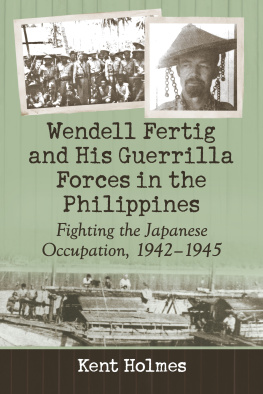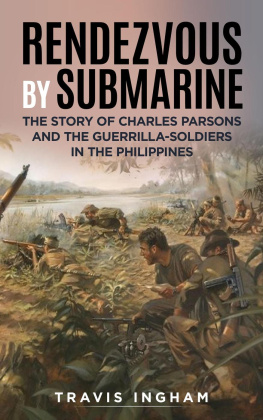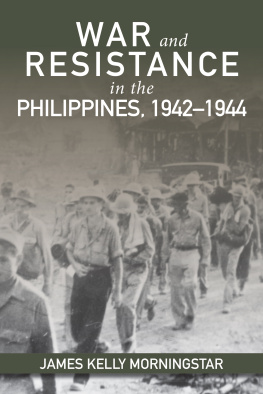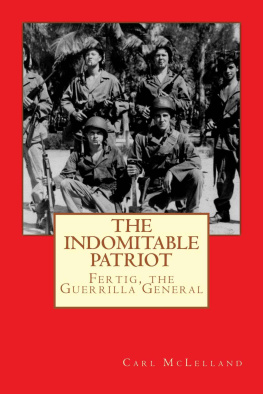
Wendell Fertig and His Guerrilla Forces in the Philippines
Fighting the Japanese Occupation, 19421945
Kent Holmes

McFarland & Company, Inc., Publishers
Jefferson, North Carolina
LIBRARY OF CONGRESS CATALOGUING DATA ARE AVAILABLE
BRITISH LIBRARY CATALOGUING DATA ARE AVAILABLE
e-ISBN: 978-1-4766-2118-0
2015 Kent Holmes. All rights reserved
No part of this book may be reproduced or transmitted in any form or by any means, electronic or mechanical, including photocopying or recording, or by any information storage and retrieval system, without permission in writing from the publisher.
On the cover: left to right Moro troops of the 108th Division under the command of Lieutenant Colonel Charles Hedges (center with wide-brim hat); Colonel Wendell W. Fertig wearing a Moro hat; The Athena, a two-masted sailing vessel of the Mindanao guerrilla navy, captained by Vicente Zapanta (all images courtesy MacArthur Memorial Museum and Archives)
McFarland & Company, Inc., Publishers
Box 611, Jefferson, North Carolina 28640
www.mcfarlandpub.com
To the brave Filipinos, Americans and other nationalities in Mindanao that made up the World War II guerrilla force of the Tenth Military District, United States Army Forces in the Philippines
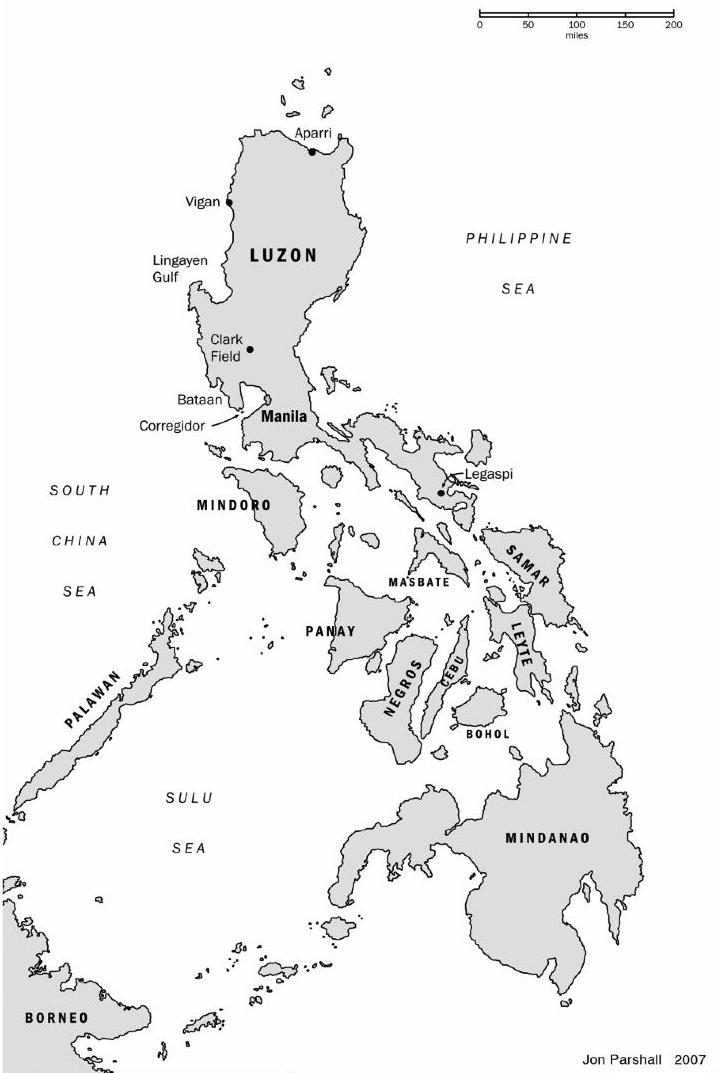
The Philippines (map by Jon Parshall).
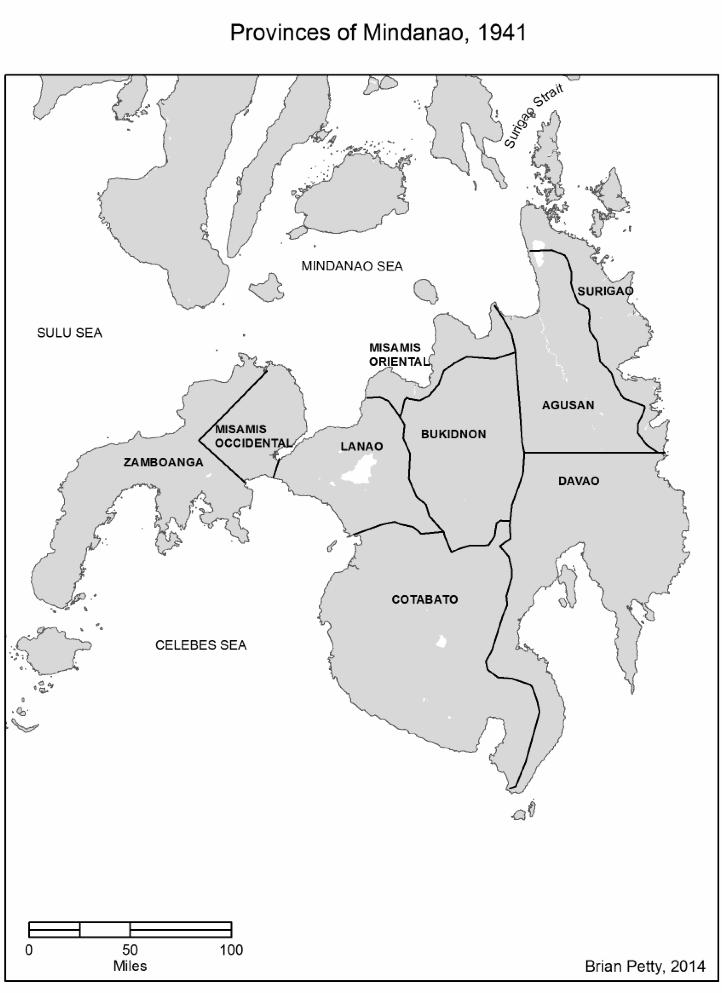
Provinces of Mindanao, 1941 (map by Brian Petty).
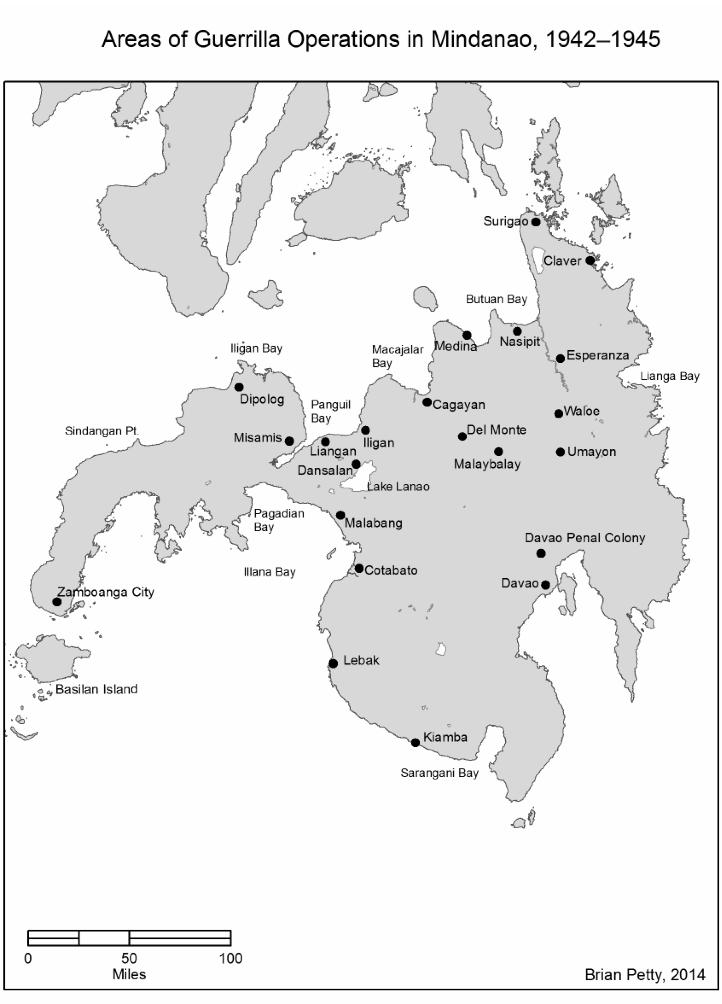
Areas of Guerrilla Operations in Mindanao, 19421945 (map by Brian Petty).
Preface
My interest in writing this book about Colonel Wendell W. Fertig was kindled when I was assisting my wife, Virginia Hansen Holmes, with her memoir, Guerrilla Daughter. Her book describes her familys struggle to survive the Japanese occupation of Mindanao during World War II. Part of that struggle was the service of her father and two brothers in the guerrilla organization assembled by Fertig following the surrender of the American and Filipino forces in May 1942. My father-in-law, Charles Hansen, like Fertig, had been in the mining business during the 1930s. Because of his World War I service, he retained a U.S. Army commission of captain in the reserves. Like many American businessmen on Mindanao, he refused to surrender to the Japanese and suffer internment for himself and his family. As Fertig organized the guerrilla movement, Hansen and his teenage sons, Rudyard and Henry, became eager volunteers for this growing armed force to oppose the Japanese occupation.
Prior to my wifes published memoir, John Keats book, They Fought Alone, had become one of the few historical sources on the activities of the guerrilla movement in which her father and brothers served. In fact, we still retain a much-used copy of the book that was autographed by Fertig.
As my wife began research for her memoir, she increasingly turned to other sources for additional information on the guerrilla movement on Mindanao. Important contributors were members of the American Guerrillas of Mindanao (AGOM), a veterans group whose members had served in the movement under Fertig during World War II. Several of these veterans had served with my father-in-law. Attending their annual reunions during the 1990s, we gleaned much background material about the guerrilla organization and the role of Fertig at various periods of the war.
A key element for us in researching the Mindanao guerrilla movement was finding my father-in-laws military records that included orders and memos written and received by him from early 1943 to mid1945. Subject matter in this material included special orders written by Fertig and other guerrilla commanders.
This collection of original documents was most useful for my wife because it provided background information and timelines on the ebb and flow of the war. However, many aspects of this material could not be used because her story was about the everyday experiences of her family in evading the Japanese. Thus, much of the information was not used or was relegated to a footnote in my wifes memoir.
This information about the guerrilla movement, such as Fertigs command problems in the early days of the movement in Misamis Occidental, prompted me at a later date to consider writing a comprehensive focus on Fertig as a major guerrilla commander in the Philippines during World War II. This book is my effort to put Fertig in perspective, particularly in the leadership role he played in orchestrating the movement as an effective force against the Japanese occupation of Mindanao. This force, with its intelligence collection from the coast watcher stations and the military capability of the guerrilla divisions to augment U.S. military forces in the liberation of Mindanao in 1945, demonstrated a capacity that was unique in the history of unconventional warfare.
While a large proportion of Fertigs guerrilla forces were Filipino officers and enlisted personnel, the focus of this book is on the multitude of command problems with which he was confronted, especially in the initial phases of organizing the movement. The leadership contributions of Filipino officers are discussed only in specific situations, but this in no way downplays the vital role the Filipino guerrillas played in the overall resistance to an aggressive Japanese military campaign to control Mindanao; rather, the emphasis of the book is providing the reader with an account and evaluation of Fertigs leadership efforts in forming and maintaining a viable military counterweight to the Japanese presence on the island.
Many of the photographs included in the book were taken during the war but the film could not be developed until wars end, causing major degradation in quality.
During and after World War II the preferred spelling of the term was Moslem. Since that time this has changed. For reasons of currency and standardization, the present author has opted for the spelling Muslim except of course in direct quotation.
I am most grateful to my wife, Virginia (Ginger) Hansen Holmes, for her tireless efforts in assisting me in the preparation of this book.
Introduction
Wendell Fertig and His Guerrilla Forces in the Philippines is an account and evaluation of Colonel Fertigs effort to organize a guerrilla movement on the island of Mindanao following the attack and occupation of the Philippines by the Japanese army after the outbreak of World War II. In addition to Fertig, there were indeed some remarkable Filipino and American guerrilla leaders that emerged to oppose the Japanese during the occupation. Because of the many islands making up the country, leadership that emerged varied from island to island. Moreover, it was diverse in its development and organization. The island of Luzon had several leaders but most notable was Lieutenant Colonel Russell Volckmann. Panay was fortunate to have a leader like Lieutenant Colonel Macario Peralta, who refused to surrender and was able to transition much of the Filipino military force into a guerrilla mode that would oppose the Japanese from the countryside. Furthermore, he was able to develop a military radio capability to communicate with General Douglas MacArthurs headquarters in Australia. Much later, in October 1943, Colonel Ruperto Kangleon, after a bitter struggle with other contenders, was recognized by MacArthur as the guerrilla leader of the Ninth Military District, comprising the islands of Leyte and Samar.
Next page
